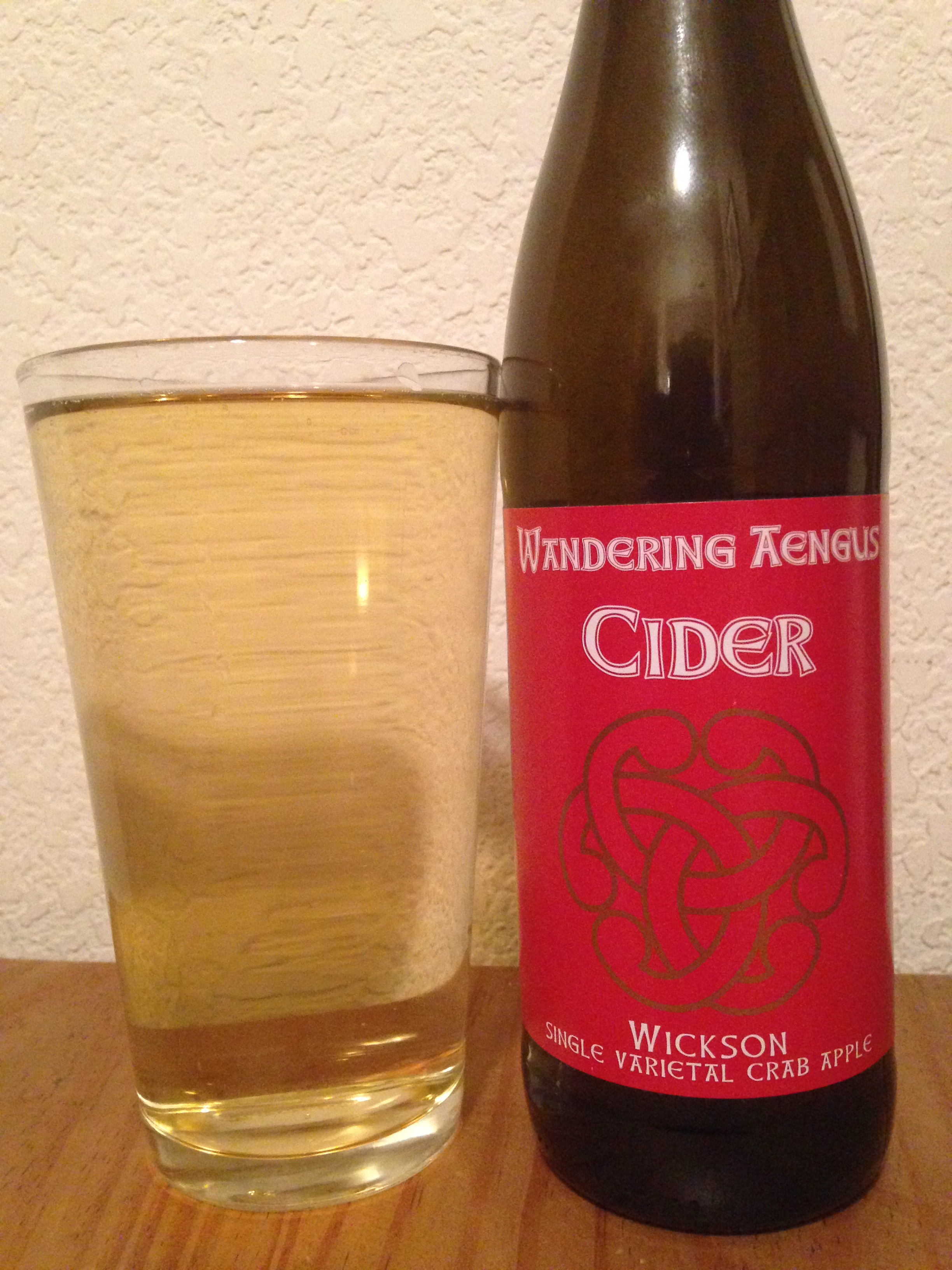Hard Cider Review: Wickson by Wandering Aengus

Wickson by Wandering Aengus Ciderworks is one potent cider. No, it doesn’t have the pleasant tannin of bittersweet or bittersharp cider apples, but it does have a unique wild apple character–powerfully acidic and crabby–that I’ve only encountered once before in JK Scrumpy’s Northern Neighbor. But whereas Northern Neighbor’s crabby intensity is moderated by its intense sweetness, Wickson (named after the crab apple variety its made from) is dry and strong (7.9% abv), with nowhere to hide from the sharply tart and oddly bitter–yet not unpleasant for all of that–assault on your palate.
The experience is a bit like if Pan himself had found these apples in some corner of the wilds inaccessible to mere mortals, fermented them, and then foisted them on you in place of your normal, everyday swill. Sure, the joke’s on you and you just got laughed at by a god, but you’re still sharing that moment, and suddenly feel a bit more alive than you just did a moment before.
Not that the use of crab apples in cider is anything new, mind you–it’s long been known as a good addition for perking up ciders made mostly from bland apples. And not that Wickson Crab is a crabapple in the sense you might be thinking, those tiny, pink or red things suitable only for jelly or, if you’re a kid, throwing at your siblings (or was that just me?), but it is the same basic idea, and it takes some serious stones–or possibly a lack of sanity–to make single-varietal crab apple ciders. With Wandering Aengus, I’m betting on the former.
The Wickson Crab is a particularly interesting apple, being both very high in sugars (7.9% abv with no sugar additions is impressive indeed, as, with some variation of course, many ciders are more like 6% without any sugar additions) and in acid. As for the latter, mine clocked in at somewhere between 3.0 and 3.2 pH, give or take quite a lot as I am using pH strips rather than a pH meter and pH is a logarithmic scale, but which is still impressive for an after-fermentation product…you usually lose some acidity during fermentation, and I don’t think I’ve encountered a juice yet that started out at–much less ended at, after fermentation–anything like 3.0.
Spirit enthusiasts speak of length–that lingering of the spirit on the palate, that with good spirits is often quite long after you’ve taken a sip. I’ve never really thought of length when it comes to cider, but this one has it–though it’s more of a lingering, one-dimensional acid warmth than anything else, and not the complex, oaked nature of aged spirits. Nonetheless, this cider’s finish reminds you that it is not the same old, bland cider that you may, if you’re unfortunate, be used to, but rather one that, if not balanced and pleasant, is something to be respected, and certainly never forgotten…
–
Thanks for visiting The Cidersage Blog. If you found this content to be useful, consider subscribing via the Subscribe link in the side bar, and be sure to visit our resources and tutorials pages for more in-depth hard cider and mead information.
I’ve had this one, and its probably one of the driest ciders I’ve tried! Thats what I get for ordering something without looking it up first (found it on tap). Thanks for the info!
It’s quite bracing! I’m a fan of the dry ones, though, so that’s my bias…